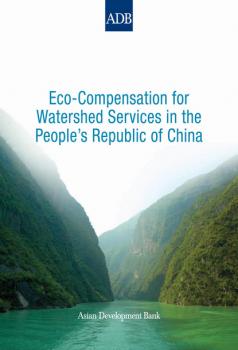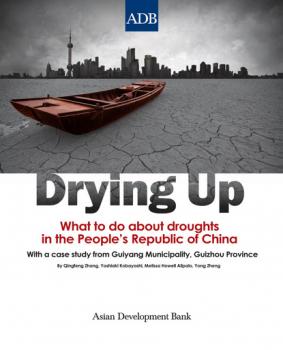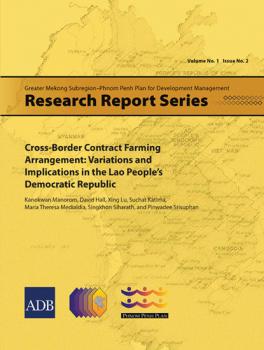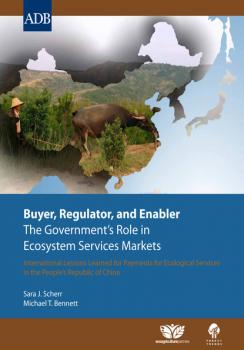Биология
Различные книги в жанре БиологияEconomics of Climate Change in East Asia
This regional study includes the People's Republic of China, Japan, the Republic of Korea, and Mongolia and examines how strategies for adapting to climate change up to 2050 can be combined with measures to reduce greenhouse gas emissions in East Asia. Besides discussing climate model results for costs of adaptation in infrastructure, coastal protection, and agriculture, the study estimates costs for sector-specific mitigation options and the total abatement potential for 2020 and 2030. Long-term strategies for addressing the impacts of climate change in East Asia are explored with a focus on the linkages between adaptation and mitigation taking account uncertainty about key climate variables. Finally, it discusses opportunities for enhancing the effectiveness of some critical climate change policies such as regional carbon market.
Eco-Compensation for Watershed Services in the People's Republic of China
The People's Republic of China (PRC) is seeking new approaches to improve water management outcomes in the face of a growing water crisis caused by ongoing pollution control and watershed management challenges. This has included numerous experiments in «eco-compensation» (which shares characteristics with payments for ecological services). This paper details progress in creating a national eco-compensation ordinance and discusses the ongoing institutional challenges in its effective development. Water is possibly the single most-pressing resource bottleneck of economic growth for the PRC over the medium term. As such, the degree to which such initiatives are ultimately successful is not only critical for the PRC but also has major ramifications for global food, fuel, and commodity markets and production chains.
Dryland Ecosystems
The People's Republic of China (PRC) suffers from some large-scale land degradation problems, posing a significant threat to the lives of local residents and to the future economic welfare of the nation. The dryland areas of the western PRC, which cover approximately 40% of the country's land area, contain some of the most severely degraded land in the world. With only about 7% of the world's farmland and 6% of the world's annual water runoff, the PRC must feed 22% of the world's population. With the assistance of the Global Environment Facility (GEF) and the Asian Development Bank, the PRC government established the PRC-GEF Partnership on Land Degradation in Dryland Ecosystems to address land degradation issues, reduce poverty, restore dryland ecosystems, and conserve biodiversity through an effective integrated ecosystem management (IEM) approach.
Drying Up
Climate change is one of a few major factors that ensure the country will continue to struggle to supply its cities and industries and fields with enough water, particularly in the North, as well as face more frequent and longer droughts. The country has shown a stunningly agile disaster response system, but its system for disaster prevention and management is far less developed. The road to greater drought management and sustainable water supplies is demand management. How to achieve this in a historically hydraulic-engineering society is explored through the case study of Guiyang Municipality in Guizhou Province.
Cross-border Contract Farming Arrangement
This series features the scholarly works supported by the Phnom Penh Plan for Development Management, a region-wide capacity building program of the Asian Development Bank that supports knowledge products and services. It seeks to disseminate research results to a wider audience so that policy makers, implementers, and other stakeholders in the Greater Mekong Subregion can better appreciate and understand the breadth and depth of the region's development challenges.
Buyer, Regulator, and Enabler: The Government's Role in Ecosystem Services Markets
This paper was originally produced for the «International Conference on Payments for Environmental Services,» held in Ningxia Hui Autonomous Region in China on 6-7 September 2009, and jointly hosted by the People's Republic of China's National Development and Reform Commission, the Ministry of Environmental Protection, the government of Ningxia Hui Autonomous Region, and the Asian Development Bank (ADB). It is part of the full volume of conference proceedings published by ADB in December 2010, entitled «Payments for Ecological Services and Eco-Compensation: Practices and Innovations in the People's Republic of China».
Twilight of the Hemlocks and Beeches
In this magnificently illustrated book, conservationist and celebrated outdoors photographer Tim Palmer launches us on a revealing journey among the hemlock and beech trees that have for millennia towered over America’s eastern woodlands. The eastern hemlock and North American beech once thrived from Maine to Georgia, casting shade on trout streams, nourishing wildlife large and small, and gracing uncounted valleys, mountainsides, parks, and backyards. These trees now face tragic decimation by exotic insects and pathogens. Palmer’s photos record the splendor of the cherished hemlock and beech in the same way that pictures of iconic, historic buildings commemorate classic landmarks gone the way of the wrecking ball. And yet, as Palmer underscores in his final chapter, the lessons learned as we address the fate of these trees can help us chart a better course for all wooded landscapes in the years ahead. This story of loss, scientific inquiry, and prospective recovery is vital to understanding nature in our time. As an act of artistic preservation, a report on the science vital to the survival of these trees, and a call to acti on, Twilight of the Hemlocks and Beeches assures a lasting legacy for this irreplaceable forest community. With more than one hundred exquisite full-color photographs, this book is a must-have for outdoor enthusiasts, natural historians, ecologists, and all lovers of nat ure.
Seeds of Control
Japanese colonial rule in Korea (1905–1945) ushered in natural resource management programs that profoundly altered access to and ownership of the peninsula’s extensive mountains and forests. Under the banner of “forest love,” the colonial government set out to restructure the rhythms and routines of agrarian life, targeting everything from home heating to food preparation. Timber industrialists, meanwhile, channeled Korea’s forest resources into supply chains that grew in tandem with Japan’s imperial sphere. These mechanisms of resource control were only fortified after 1937, when the peninsula and its forests were mobilized for total war.In this wide-ranging study David Fedman explores Japanese imperialism through the lens of forest conservation in colonial Korea—a project of environmental rule that outlived the empire itself. Holding up for scrutiny the notion of conservation, Seeds of Control examines the roots of Japanese ideas about the Korean landscape, as well as the consequences and aftermath of Japanese approaches to Korea’s “greenification.” Drawing from sources in Japanese and Korean, Fedman writes colonized lands into Japanese environmental history, revealing a largely untold story of green imperialism in Asia.
Wintergreen
In the Willapa Hills of southwest Washington, both the human community and the forest community are threatened with extinction. Virtually every acre of the hills has been logged, often repeatedly, in the past hundred years, endangering both the land and the people, leaving dying towns as well as a devastated ecosystem. Weaving vivid portraits of the place and its inhabitants—animal, plant, and human—with the story of his own love affair with the hills, Robert Michael Pyle has written a book so even-handed in its passion that it has been celebrated by those who make their living with a chain saw as well as by environmentalists. As he writes, 'My sympathies lie with the people and the woods, but not with the companies that have used them both with equal disregard.'In his vivid portrayal of the land, plants, people and animals of the Willapa Hills of Washington State, Bob Pyle makes the modest patch of land he writes about a metaphor for the world.
Last of the Curlews
In this conservation classic, originally published fifty-five years ago, Fred Bodsworth tells the story of a solitary Eskimo curlew’s perilous migration and search for a mate. The lone survivor comes to stand for the entirety of a species on the brink of extinction, and for all in nature that is endangered. This new paperback edition includes a foreword by Pulitzer Prize-winning poet W.S. Merwin and an afterword by Nobel Prize-winning physicist Murray Gell-Mann.









